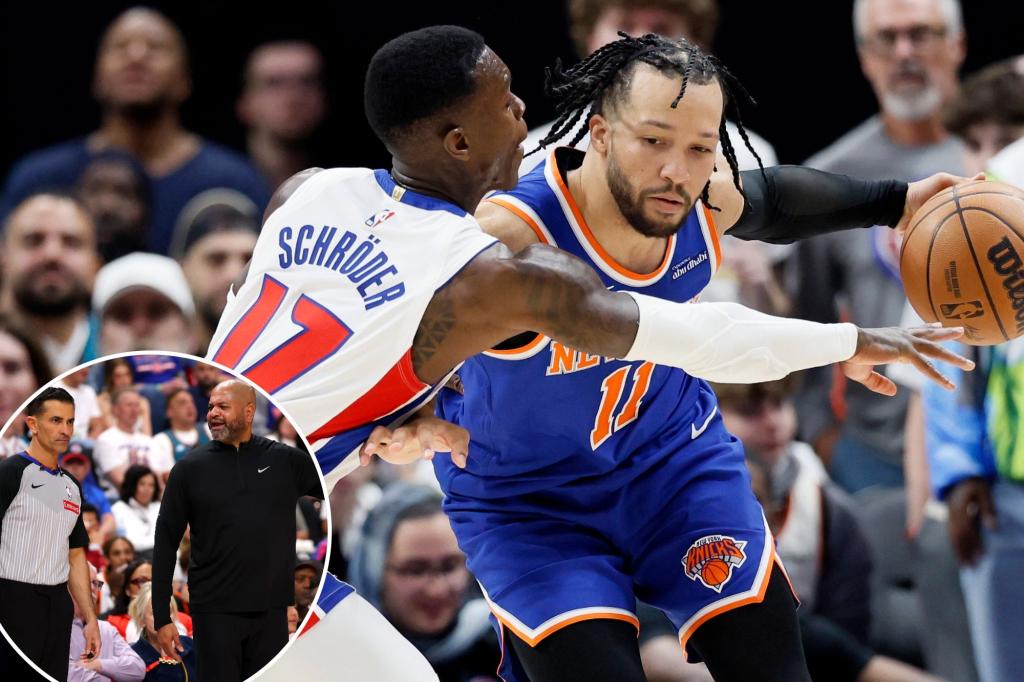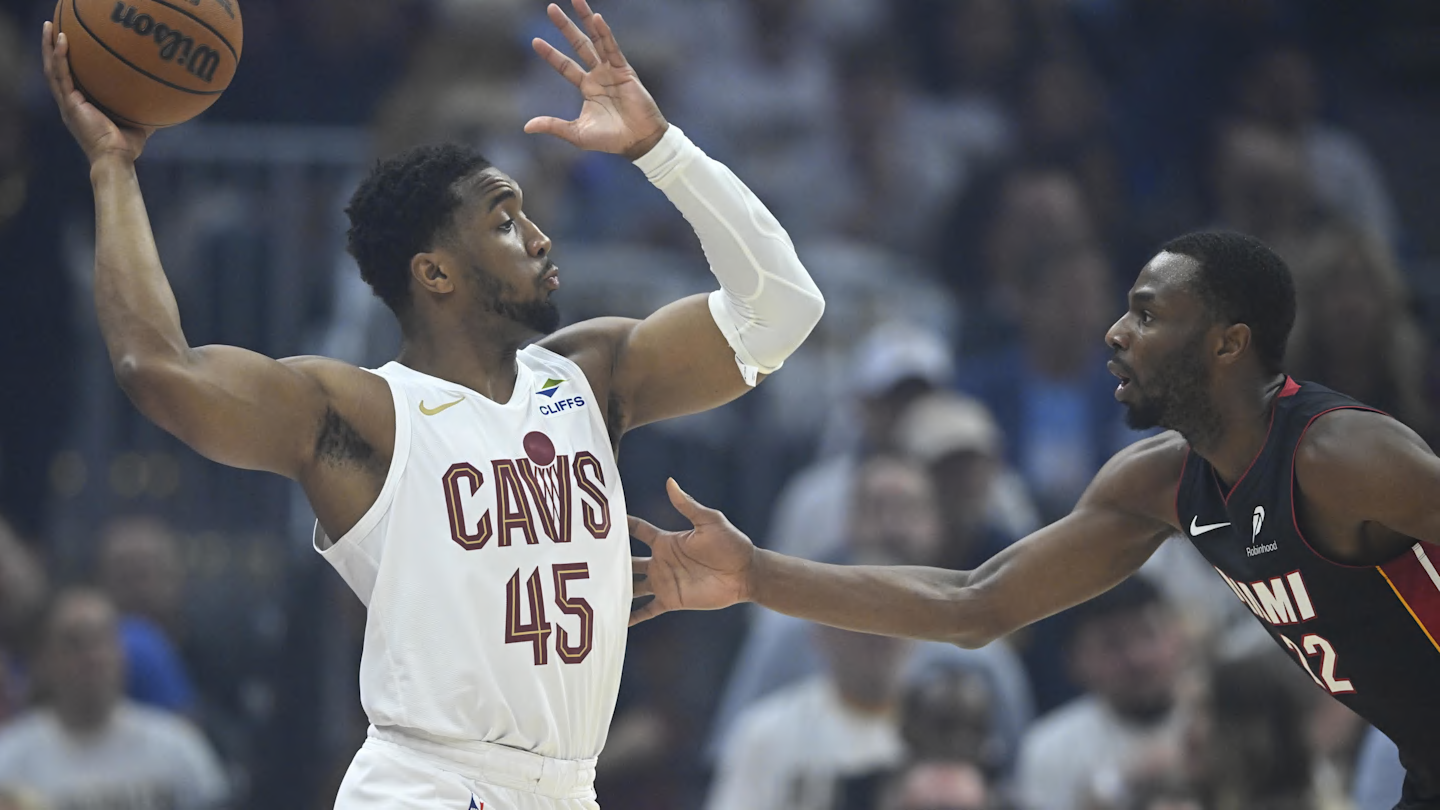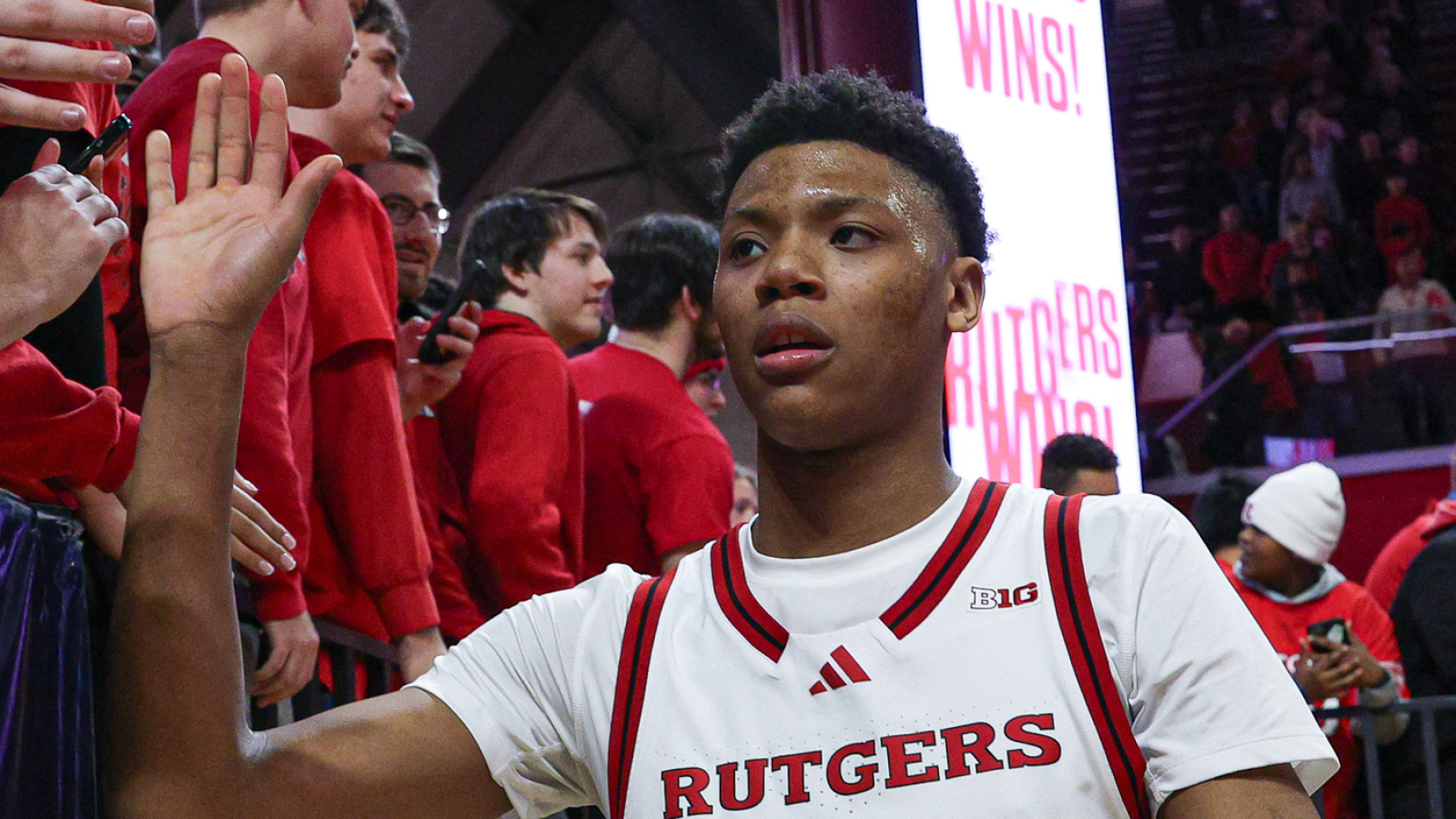
DETROIT — J.B. Bickerstaff wanted answers.
He got them, though they might not have been the ones he was looking for.
The Pistons could have had a real shot to tie the score late in the Knicks’ 118-116 Game 3 win Thursday night at Little Caesars Arena.
Bickerstaff complained about a controversial non-call that would have given them that chance.
Dennis Schroder posted three images of the play on his Instagram story, along with an eyeballs emoji.
But the NBA says the decision was correct.
With 5.8 seconds left, Jalen Brunson received an inbounds pass from Mikal Bridges.
The pass led him back toward his own basket, but the ball first hit his hand when he was in the frontcourt.
Brunson then stepped into the backcourt with the ball.
He was not called for a backcourt violation, despite the Pistons’ — and their fans’ — pleas.
The Knicks were up 116-113 at the time, so if it had been called, the Pistons would have gotten the ball in a one possession game with enough time to get a quality shot.
“The Brunson play where he catches the ball in the frontcourt, recognizes that he’s getting ready to go in the backcourt, and then drops the ball,” Bickerstaff said after the game. “And we had a timeout with 5.8 seconds on the clock. So, there’s some things procedurally that I have questions about, and I’d be interested to hear some answers.”
According to the rulebook, “If the momentum of the offensive player receiving the pass carries him into the backcourt,” it is not a backcourt violation if the receiving player did not establish position with full possession of the ball in the frontcourt.
That’s exactly what crew chief Zach Zarba explained after the game.
“Rule 4, Section 6G, the frontcourt backcourt status is not obtained until a player with the ball has established a positive position in either half, in this instance, during the throw in the last two minutes of the fourth period and the last two minutes in any overtime period,” Zarba said. “So, obviously that is where we are at that point. Brunson and the trajectory of the pass were headed towards the backcourt.
Follow The Post’s coverage of the Knicks in the NBA playoffs
“Brunson’s momentum was taking him there when he touches the ball. Due to that momentum, he’s not considered in a positive position at that time. That’s why the play is legal.”
In other words, the refs determined Brunson had not established himself in the frontcourt with possession before going into the backcourt.
On Friday, the NBA concurred that it was the correct decision in its two-minute report.
“Brunson’s momentum carries him into the backcourt when he first touches the ball, so he is not considered to be in a positive frontcourt position,” the league said in its report. “During a throw-in in the last two minutes of the fourth period, a player does not attain frontcourt (or backcourt) status until they have established a positive position in that half of the court.”



